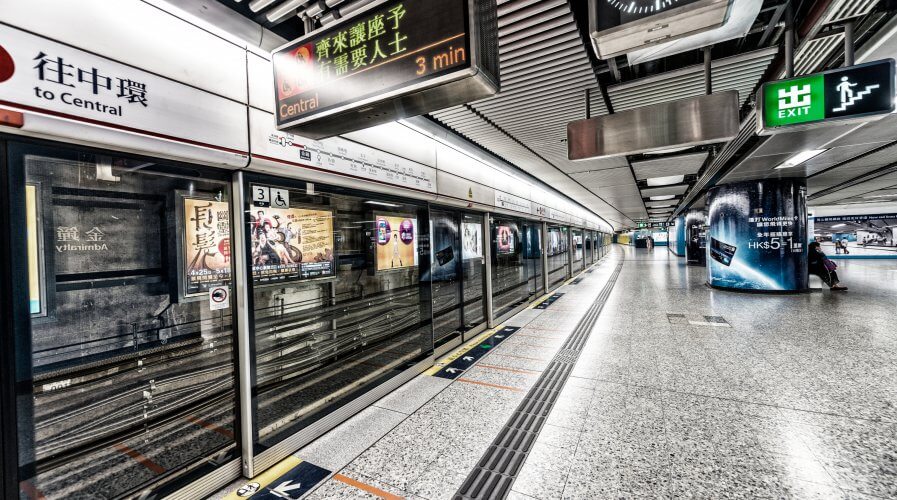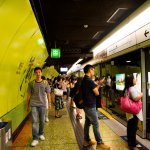
Robots could be a sight here soon. Source: Shutterstock
Hong Kong brings robots to MTR amid smart transport push
- Hong Kong’s MTR is bringing a fleet of five robots to a station to test their role in enhancing customer service
- The initiative forms part of wider invests into tech and innovation to develop better services
When we talk about smart transportation, we’re usually talking about making journey routes more efficient with big data analytics, or sensor-laden vehicles communicating with one another and their surroundings.
But we don’t often talk directly about how technology can make transport worker’s lives easier too.
Taking pride in its “world-class level” of on-time passenger journeys – at better than 99.9% during the first five months in 2020 – Hong Kong’s Mass Transit Railway (MTR) wants to bring technology into its stations that could enhance customer service and help ‘real’ employees in their daily routine tasks.
The MTR is deploying a fleet of five robotic ‘smart trainees’ to undergo tests at the Kai Tak station in the third quarter of the year, amid wider consideration to initiatives and technologies that can improve the railway service and enhance operational efficiency.
The five robots will comprise ‘Finder-T’, ‘Guider-T’, ‘Checker-T’ and two types of ‘Cleaner-T’, all which will support staff by carrying out different tasks throughout the station.
Finder-T and Guider-T will answer passenger enquiries about journey planning and, with mapping function, lead passengers to designated locations in the station such as entrances, exits and toilets, while the “Checker-T” will patrol the station at night after the station close and help check on the status of facilities using image analysis.
Equipped with water filtration systems, the two types of “Cleaner-T” will automatically clean the station with eco-technology after daily service.
The “smart trainees” are still in their learning phase with their software and functions requiring continuous testing and adjustment. The MTR aims to study how these robots help enhance station services and gather passengers’ feedback on their services, leading to a continuous cycle of service improvement.
“MTR has been making use of new technology and equipment to assist staff in daily routine tasks and enhancing efficiency,” said Dr Tony Lee, Operations Director of MTR Corporation. “Technology enables our station operations team to enhance customer service delivery, and the maintenance team on coming up with more forward-looking maintenance measures using big data and real-time monitoring.”
MTR said it has invested more than $9.8 billion in 2019 into railway maintenance and asset replacement, with a focus on technology and innovation to enhance its capabilities.
Outside of its stations, for example, the “Underframe Inspection Robot” at Pat Heung Depot can scan the underframe of trains with high efficiency using image recognition and artificial intelligence. If any abnormality is found, the robot will alert maintenance staff for appropriate follow up.
The organization has introduced real-time monitoring equipment, including devices to monitor the condition of pantographs (the arm-like contact points between an electric train and power lines) during transit, while the MTR Data Studio analyzes big data collected from operations, paving the way for ‘round-the-clock’ monitoring.
Meanwhile, MTR’s RailGen 2.0 program is dedicated to bringing ‘superior connectivity, enhanced services, and a personalized service’ to commuters. This includes real-time and personalized trip information, and also help in the form of chatbots.
Despite these investments in technology in efforts to overhaul its operations, Lee said “talent remains at the core of innovation and technology” at the group. “We attach great importance to in-house development and training, and will continue to provide resources to our engineers to encourage them to explore innovative ideas.”
READ MORE
- Ethical AI: The renewed importance of safeguarding data and customer privacy in Generative AI applications
- How Japan balances AI-driven opportunities with cybersecurity needs
- Deploying SASE: Benchmarking your approach
- Insurance everywhere all at once: the digital transformation of the APAC insurance industry
- Google parent Alphabet eyes HubSpot: A potential acquisition shaping the future of CRM


